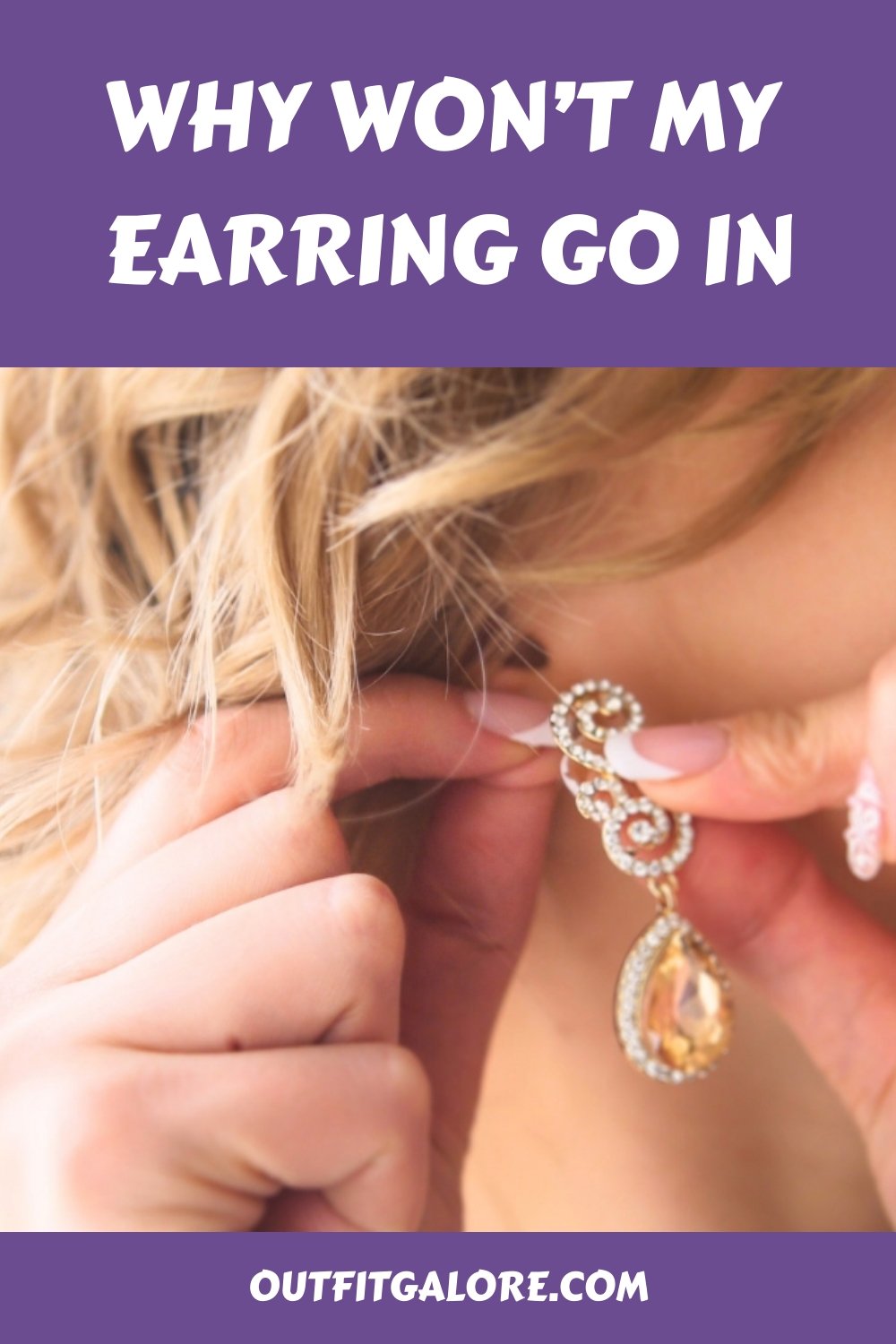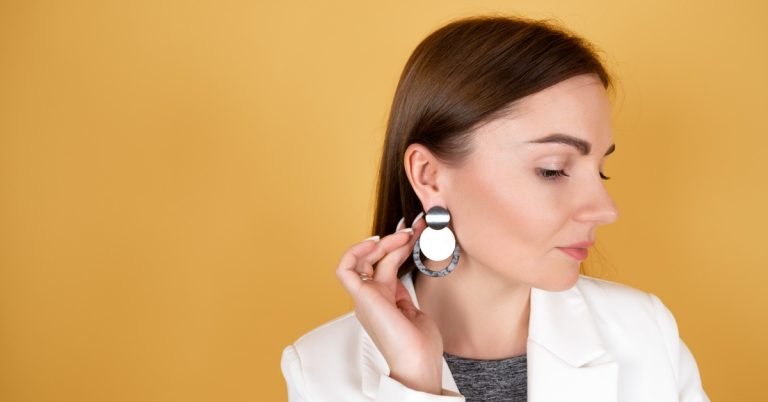Why Won’t My Earring Go In
If you’ve ever struggled to get an earring in, you know the frustration and confusion that can come with it. It’s like trying to fit a round peg into a square hole; it just doesn’t seem to work!
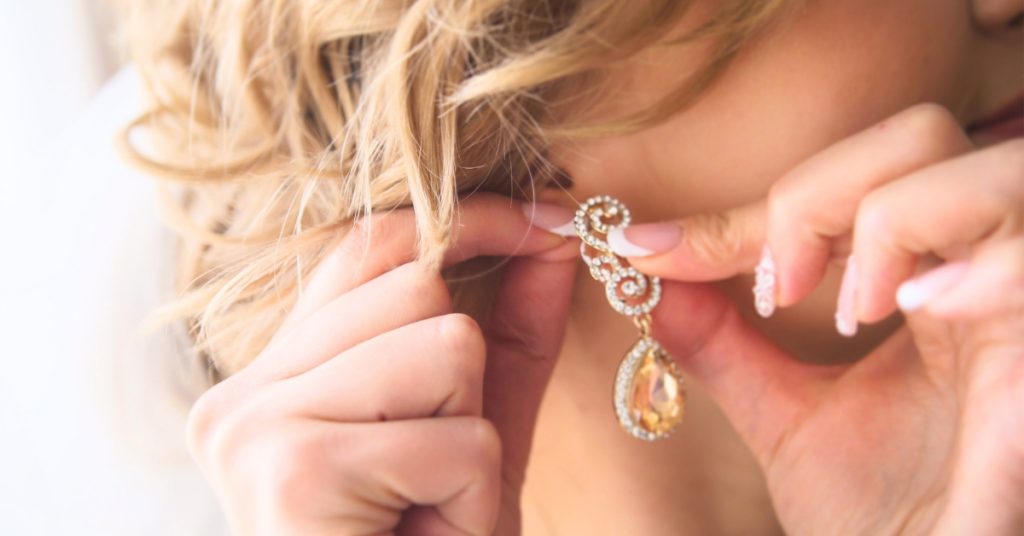
Whether it’s due to allergies, skin reactions, or a lack of proper cleaning or insertion techniques, there are many potential reasons why your earrings won’t go in.
In this article we’ll explore the possible causes and solutions for when your earring won’t go in. We’ll discuss allergies and reactions, skin irritations, earring cleaning and maintenance, proper insertion techniques, avoiding trauma or injury during piercing aftercare and professional advice and treatment.
Table of Contents
Key Takeaways
- Difficulty inserting earrings can be caused by infections, allergies, skin irritations, and improper cleaning/insertion techniques.
- Prevention and solutions include keeping ears clean and sanitized, using hypoallergenic materials, seeing a professional piercer for advice and treatment, and avoiding jewelry that causes irritation.
- Proper aftercare involves cleaning ears with a saltwater solution or gentle cleaning product daily, avoiding makeup near the pierced area, and seeking professional help for swelling or redness at the site of a new piercing.
- Piercings should be made with jewelry made from titanium or stainless steel, and lack of training or expertise can result in further problems later on down the line.
Potential Causes of Earring Trouble
Struggling to put your earring in? Don’t worry – there could be a few potential causes.

One of the most common reasons for this issue is that your ears are fighting off an infection. The skin around the piercing can become irritated and inflamed, making it difficult to insert the jewelry. This is why it’s important to keep your ears clean and sanitized regularly when wearing earrings or other jewelry.
Additionally, you may also need to lubricate your ears once in a while with a gentle oil product specifically designed for ear piercings. Doing this can help prevent dryness which can make inserting jewelry more difficult.
Another cause of difficulty getting an earring into place might be allergies or reactions to certain metals or materials used in the jewelry itself. This often happens when someone wears cheaper pieces made from alloys that contain nickel and other similar metals, since many people are allergic or sensitive to these substances.
It’s best to go with quality metal pieces made from gold, silver, or platinum if you’re looking for hypoallergenic options that won’t irritate your skin as much when inserted into the piercing hole. See our post on why do my ears itch when I wear earrings
If none of these suggestions seem applicable to your situation, then you should consider seeing a professional piercer who can take a look at what could be going on and provide better advice about how to fix it – without risking further damage! Taking safety precautions is especially important because infections due to improper insertion techniques can occur quite easily when dealing with any kind of body modification like piercings.
With that in mind, moving forward cautiously is always advised so as not to increase complications down the line. Transitions into allergies and reactions on the next subtopic will help explain why taking such care is necessary.
-
Product on sale
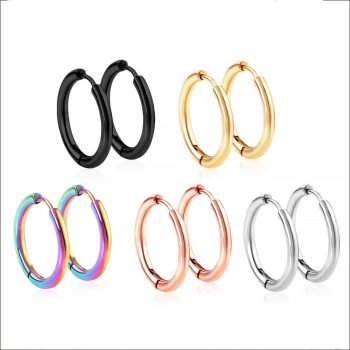 Small Hoop Earrings – Women & Men$10.00 – $15.00
Small Hoop Earrings – Women & Men$10.00 – $15.00 -
Product on sale
 Colored 925 Silver Earrings Various DesignsOriginal price was: $37.00.$15.00Current price is: $15.00.
Colored 925 Silver Earrings Various DesignsOriginal price was: $37.00.$15.00Current price is: $15.00. -
Product on sale
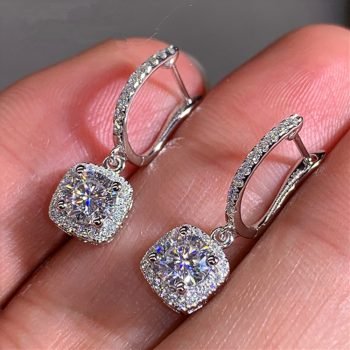 Women’s Crystal Drop EarringsOriginal price was: $27.00.$15.00Current price is: $15.00.
Women’s Crystal Drop EarringsOriginal price was: $27.00.$15.00Current price is: $15.00. -
Product on sale
 Geometric Earrings for WomenOriginal price was: $31.00.$15.00Current price is: $15.00.
Geometric Earrings for WomenOriginal price was: $31.00.$15.00Current price is: $15.00. -
Product on sale
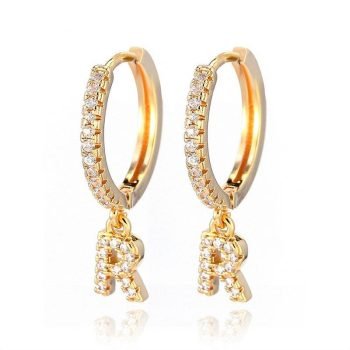 Women’s Initial Letter Hoop EarringsOriginal price was: $33.00.$15.00Current price is: $15.00.
Women’s Initial Letter Hoop EarringsOriginal price was: $33.00.$15.00Current price is: $15.00. -
Product on sale
 Top Fashion Twisted Metal EarringsOriginal price was: $15.00.$10.00Current price is: $10.00.
Top Fashion Twisted Metal EarringsOriginal price was: $15.00.$10.00Current price is: $10.00.
Allergies and Reactions
If you’re allergic to the metal in your earring, it can cause a reaction that won’t let it fit. Allergies and reactions to jewelry are quite common and can be caused by many different types of metals including nickel, copper, silver, gold or other non-metallic substances like latex used to make earring backs.
To reduce the chances of a reaction, look for hypoallergenic materials such as surgical stainless steel or titanium. Here are some other steps you can take:
- Opt for jewelry made with 18k or below gold which has fewer alloys mixed in than higher karats do.
- Consider switching out existing posts for titanium posts which are more lightweight and less likely to cause skin sensitivity issues.
- Use extra gentle products when cleaning your jewelry – avoid harsh chemicals at all costs!
- Wear any new piece of jewelry for short periods of time before wearing it all day long – this’ll help you gauge if there’s a potential issue with skin sensitivity or allergies.
If none of these steps work, visit an allergist who may be able to help identify what’s causing the irritation and recommend solutions that could help alleviate symptoms so that you can wear your favorite earrings without any problems!
Skin Irritations
Are you suffering from skin irritations due to wearing jewelry? Skin irritation is a common problem caused by earrings, necklaces, and other pieces of jewelry. It’s important to take measures to avoid irritation and prevent it from getting worse.
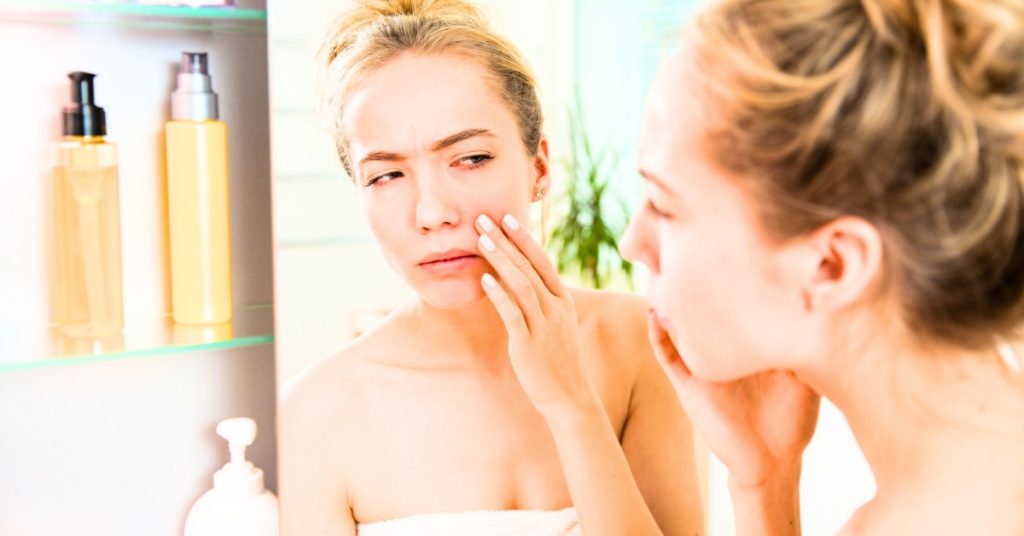
For example, if you’re thinking about getting your ears pierced, make sure it’s done professionally in the right place to reduce the chances of developing rashes and infections. In some cases, people may be allergic to certain metals or materials used in their jewelry.
If this is the case, it’s best to switch over to hypoallergenic materials such as stainless steel or titanium for your piercings and other pieces of jewelry. This will help prevent any possible reactions and keep your skin healthy.
It’s also important to keep an eye on how your body reacts when wearing certain pieces of jewelry. If something feels uncomfortable or starts causing any kind of irritation on your skin, stop wearing it immediately until you can figure out what’s causing the issue. Taking these precautions now can help avoid bigger problems down the road.
Learn more about what to do if earring hole closed and what size is a normal earring for safe and comfortable jewelry wearing.
With this knowledge in mind, let’s move on to looking at ways we can clean and maintain our earrings for optimal hygiene and comfort going forward.
Earring Cleaning and Maintenance
Cleaning and maintaining your earrings is essential for keeping them looking good and avoiding any potential skin irritations. Earrings should be part of your skincare routine, no matter what type of piercing they’re in. Here’s a few tips to keep your earrings sparkly and free from irritation:
- Clean the earring posts regularly with an antibacterial soap or cleaning solution.
- Make sure the backs of the earrings are secure so that dirt doesn’t accumulate on them.
- Store your earrings in a clean place when not being worn.
- Have your piercings checked by a professional, if needed, to ensure proper healing process.
- Remove any damaged parts of the jewelry before wearing them again.
Taking care of your earrings takes discipline, but it’ll be worth it in the long run. Properly cleaned and maintained jewelry can last for many years while also preventing skin irritations. Knowing how to insert them properly is just as important as cleaning and maintaining them.
-
Product on sale
 Acrylic Box Geometric ClutchOriginal price was: $55.00.$36.00Current price is: $36.00.
Acrylic Box Geometric ClutchOriginal price was: $55.00.$36.00Current price is: $36.00. -
Product on sale
 Anti-glare UV400 Small Sunglasses for WomenOriginal price was: $53.00.$15.00Current price is: $15.00.
Anti-glare UV400 Small Sunglasses for WomenOriginal price was: $53.00.$15.00Current price is: $15.00. -
Product on sale
 Cat Eye Women’s Sunglasses UV400Original price was: $24.00.$12.00Current price is: $12.00.
Cat Eye Women’s Sunglasses UV400Original price was: $24.00.$12.00Current price is: $12.00. -
Product on sale
 Designer Cat Eye Sunglasses for WomenOriginal price was: $35.00.$15.00Current price is: $15.00.
Designer Cat Eye Sunglasses for WomenOriginal price was: $35.00.$15.00Current price is: $15.00. -
Product on sale
 Ethnic Retro Flower Clutch BagOriginal price was: $26.00.$15.00Current price is: $15.00.
Ethnic Retro Flower Clutch BagOriginal price was: $26.00.$15.00Current price is: $15.00. -
Product on sale
 High Quality Designer Tote Clutch BagOriginal price was: $204.00.$108.00Current price is: $108.00.
High Quality Designer Tote Clutch BagOriginal price was: $204.00.$108.00Current price is: $108.00.
Proper Insertion Techniques
Inserting your earrings correctly is key to avoiding irritation and ensuring they stay put all day. Select the right earring for you, with the ideal size, shape, and weight for your ears. If you’re looking for a self-piercing option, make sure to select one of high quality that won’t cause trauma or injury to your skin.
Also, take into account the material of the earring – some metals can irritate sensitive skin, so opt for sterling silver or gold if this is an issue. Making sure you insert your earrings properly will also help avoid any issues with comfort or security.
Be careful not to apply too much pressure when inserting them – simply push gently until they go in easily and securely without causing pain or discomfort. If you have difficulty getting them in, try using some lubricant, such as petroleum jelly, on the post, which should make it easier.
To ensure a secure fit, twist the backings gently once inserted and check that there’s no gap between them and your ears – if there is, then adjust accordingly until they feel comfortable and secure. Doing this should also help reduce any inflammation caused by incorrect insertion and give you peace of mind all day long.
To further prevent trauma or injury, continue reading about how to avoid those issues next.
Avoiding Trauma or Injury
Having an ear piercing can be a great way to express yourself, but it’s important to take steps to avoid trauma or injury.

Make sure you don’t overstretch the hole when you insert your jewelry and be careful with makeup and hair products around the area.
By following these simple tips, you can keep your ears healthy and happy!
Avoiding Overstretching
Don’t overstretch the hole in your earlobe, or you could be left with a painful reminder! When choosing earrings, it’s important to keep in mind the limitations of stretching.
Make sure you choose materials that won’t cause additional stretching of the piercing beyond what is necessary to fit into the lobe. Also, make sure your jewelry isn’t too heavy. This can create additional tension on the lobe and stretch it further, leading to tearing or ripping of the flesh and infection.
Endeavor to stay within your limits when selecting earrings – you’ll thank yourself later! As an added precaution, take care when using makeup and hair products around your piercing. These can contain ingredients that may irritate or damage it.
Taking Care With Makeup and Hair Products
Now that you know how to avoid overstretching your piercing, it’s important to take care when using makeup and hair products. Good hygiene habits are key to keeping your piercings healthy.
Here are some tips for taking care with makeup and hair products:
- Always select quality products that are designed specifically for sensitive skin.
- Sanitize applicators between uses and avoid sharing them.
- Remove all makeup before bedtime to ensure proper healing of the area.
These simple steps will help keep your earrings looking great! To further protect your piercing, be sure to practice good aftercare habits as well.
Piercing Aftercare
After piercing, it’s essential to take proper care of your earring to ensure that it can be easily inserted. Developing good hygiene habits and protecting the piercing location from irritants and excessive contact is key.
Clean your ears with a saltwater solution or gentle cleaning product each day, which will help reduce any inflammation around the piercing site. Additionally, make sure you avoid using makeup near the pierced area as this can lead to infection or blockage in the hole.
If you experience swelling or redness at the site of your new piercing, consult a professional for advice and treatment. They may recommend replacing your jewelry with one made from titanium or stainless steel that is specifically designed for piercings.
If these measures don’t work, they may have other recommendations such as soaking in warm water with sea salt or applying an antibiotic ointment on a daily basis. Be sure to check our post to know when you can change your earrings after piercing.
No matter what method you use for aftercare, it’s important to remember not to play with your jewelry too much as this can cause further irritation and discomfort. Moving forward into professional advice and treatment will help you get back on track with inserting your earring without any difficulty.
-
Product on sale
 Exquisite Design Ladies WatchOriginal price was: $63.00.$27.00Current price is: $27.00.
Exquisite Design Ladies WatchOriginal price was: $63.00.$27.00Current price is: $27.00. -
Product on sale
 Small Dial Ladies Fashion Watch$18.00 – $21.00
Small Dial Ladies Fashion Watch$18.00 – $21.00 -
Product on sale
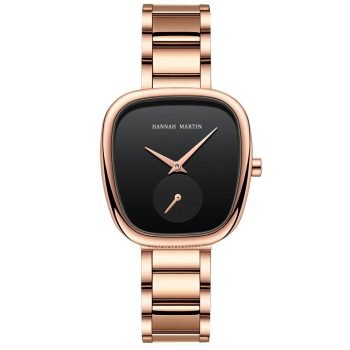 Elegant Bracelet Wristwatch For Women$28.00 – $34.00
Elegant Bracelet Wristwatch For Women$28.00 – $34.00 -
Product on sale
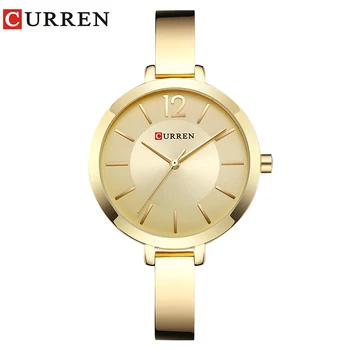 Ultra Thin Romantic Clock Women’s Watch$22.00 – $26.00
Ultra Thin Romantic Clock Women’s Watch$22.00 – $26.00 -
Product on sale
 Classic Clock Leather Wristwatches Multiple Colors$26.00 – $28.00
Classic Clock Leather Wristwatches Multiple Colors$26.00 – $28.00 -
Product on sale
 Dressy Ladies Wrist Watch$27.00 – $37.00
Dressy Ladies Wrist Watch$27.00 – $37.00
Professional Advice and Treatment
If you’re having trouble inserting your piercing, it’s important to seek professional advice and treatment right away. From infection prevention to piercer selection, there are a few steps you can take to ensure that your piercing is done correctly and safely. Here are 4 tips for seeking professional advice and treatment:
Research the piercer you plan to use – Ask around for recommendations or read online reviews of different professionals in your area. It’s important to make sure they have a good reputation with customer service and safety protocols.
Get an appointment – If possible, try to get an appointment with the piercer or their staff before getting pierced so that any questions or concerns can be addressed beforehand. This will also ensure that the piercing is done properly from start to finish.
Follow aftercare instructions – Most piercings come with aftercare instructions which should be followed closely for optimal healing times and minimal complications such as infections or scarring due to improper care.
Avoid self-treatment – Trying to treat a piercing yourself may lead to further complications down the line, so it’s best not to attempt this without the help of a professional who has experience in dealing with these types of issues.
Seeking professional advice and treatment is essential when it comes time for inserting your piercing, as doing so on your own could result in further problems later on down the line due to the lack of training or expertise required for successful insertion without complication. check out our post on When Can You Change Earring After Piercing?
Frequently Asked Questions

What types of earrings are best for sensitive ears?
If you have sensitive ears, hypoallergenic earrings are your best option. Look for ones made of gold or surgical-grade stainless steel. Avoid cheap metals such as nickel or cobalt. Have your piercing done using a sterile needle and follow aftercare instructions carefully to reduce inflammation and irritation.
How can I tell if I have an allergy to certain metals?
If you suspect a metal allergy, test your reactions by wearing different types of earrings and observing how your skin responds. Identify which metals cause an allergic reaction and avoid them to ensure comfort. Be sure to take note of any changes in your skin or sensitivity levels when testing for allergies.
Are there any risks associated with wearing earrings?
there are risks associated with wearing earrings. Different materials can cause irritation or infection. Pain relief products may help, but it’s best to avoid certain metals if you have an allergy.
How can I tell if I am inserting earrings correctly?
To determine if you’re inserting earrings correctly, consider the size and material of your earring. “Measure twice, cut once”is an apt idiom to keep in mind as it is important to be sure you’ve chosen the right fit before pushing it through. Choose a material that won’t irritate the skin for comfortable wear.
How often should I clean my earrings?
You should clean your earrings regularly, especially if you’re wearing ones made of certain materials. Choose a cleaning solution that’s gentle and won’t damage the material. Then, follow the instructions on the cleaner for proper use.
Conclusion on Why Won’t My Earring Go In

Having trouble getting your earrings to stay put? You’re not alone! Many people have difficulty with earrings, but there are a few steps you can take to make sure you get the most out of your pieces.
Start by making sure you clean and maintain them properly, avoiding any trauma or injury. If that doesn’t work, seek professional advice and treatment from an experienced piercer.
With these tips in hand, you’ll be able to “pierce” through all of your earring woes!

